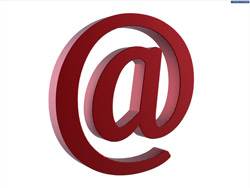 The actual origin of the @ symbol remains an enigma.
The actual origin of the @ symbol remains an enigma.
Like many letter forms and symbols, the origins of the ubiquitous @ symbol are lost to antiquity, but we do have some good ideas. It seems it was used by monks making copies of books even before the invention of the printing press. Since every single word had to be painstakingly transcribed by hand for each and every copy of a book, the monks performing these copying duties looked for any way possible to reduce the number of individual strokes per word, particularly for common words. Ergo, the word "at" became a single stroke of the pen as "@" instead of three strokes. It may not seem like much, but it makes a enormous difference if you spend your life copying manuscripts.
Another origin tale states that the @ symbol was used as an abbreviation for the word amphora, which was the unit of measurement used to determine the amount held by the large terra cotta jars that were used to ship grain, spices and wine. It seems likely that some industrious trader saw the @ symbol in a book transcribed by monks using the symbol and appropriated it for use as the amphora abbreviation. This would also explain why it became common to use the symbol in relation to quantities of something.
Of course, today everybody knows the symbol due to its use in e-mail addresses, such as "someone@...." Indeed, other forms of typographic vernacular have entered our vocabulary, such as dot, backslash, and tilde, but that could be a whole 'other column!
